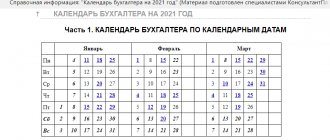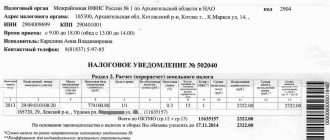Law for the benefit of the employer
Denis Pokshan
Expert in taxes, accounting and personnel records
Current as of April 27, 2018
Payment of VAT in 2021 must be carried out within the prescribed period. Otherwise, controllers will charge penalties for late payment of taxes. To avoid troubles, you need to calculate the amount on time and draw up a payment order to the fiscal authority. Here are the target dates for paying VAT in 2021.
VAT payment deadlines in 2021: table for accountants
The Tax Code establishes the deadlines for transferring VAT in 2018. The tax must be paid no later than the 25th day of each month (Clause 1, Article 174 of the Tax Code of the Russian Federation). If the 25th is a day off or holiday, then the money can be transferred with impunity on the next working day. Below is a table with the deadlines for paying VAT for 2021:
| Period | First payment due date | Second payment due date | Deadline for third payment |
| 1st quarter 2021 | 25.04.2018 | 25.05.2018 | 25.06.2018 |
| 2nd quarter 2021 | 25.07.2018 | 08/27/2018 (August 25 – Saturday) | 25.09.2018 |
| 3rd quarter 2021 | 25.10.2018 | 11/26/2018 (November 25 – Sunday) | 25.12.2018 |
| 4th quarter 2021 | 25.01.2019 | 25.02.2019 | 25.03.2019 |
Procedure for calculation and deadline for submitting VAT
VAT is a tax that must be calculated by business entities that apply general taxation rules.
In certain situations, defaulters will also have to consider it. About when such situations arise for non-payers, read the material “Procedure for VAT refund under the simplified tax system.”
The calculation procedure, as a rule, does not cause difficulties. When selling inventory items (material assets) or services, the VAT payer increases the sales amount by the VAT rate, and takes the input tax as a deduction, thereby reducing the tax accrued upon the sale. In fact, VAT is calculated on the markup. For example, a company bought inventory items for 12,000 rubles. (10,000 for the goods and 2,000 for VAT), and sold them for 18,000 rubles. (15,000 - for goods and materials with a markup and 3,000 rubles - VAT). You must pay the difference between sales tax and input tax to the budget, that is, 1,000 rubles. (3,000 – 2,000). Tax evaders are not entitled to use the deduction.
Information about incoming VAT should be recorded in the purchases ledger, and information about outgoing VAT in the sales ledger. The difference is displayed in the declaration at the end of the quarter. Purchase and sales ledger data is an integral part of this report. The declaration must be submitted to the Federal Tax Service at the place of registration of the taxpayer no later than the 25th day of the month following the reporting quarter (clause 5 of Article 174 of the Tax Code of the Russian Federation).
NOTE! VAT payers can send declarations to the Federal Tax Service only in electronic form via secure communication channels, having previously certified the files with an electronic digital signature. Defaulters have the right to submit this report on paper.
In case of late submission of VAT reports, there are penalties in the amount of 5% of the tax amount for each month of delay, but not less than 1000 rubles. and no more than 30% of the tax amount (clause 1 of Article 119 of the Tax Code of the Russian Federation).
Deadlines for payment of “import” VAT in 2018
Legal entities purchasing products in the EAEU countries pay import VAT. We are talking about the following countries: Armenia, Belarus, Kazakhstan and Kyrgyzstan. Payment of VAT in 2021 on imports is made no later than the 20th day of the month following the month in which the goods are accepted for registration or the due date for payment under the contract has arrived (clause 19 of the Protocol to the Treaty on the Eurasian Economic Union). Here is a table with the deadlines for paying VAT in 2021 for the following objects:
| Period for which VAT is paid | Payment deadline |
| January 2018 | 20.02.2018 |
| February 2021 | 20.03.2018 |
| March 2021 | 20.04.2018 |
| April 2021 | 05/21/2018 (May 20 – Sunday) |
| May 2021 | 20.06.2018 |
| June 2021 | 20.07.2018 |
| July 2021 | 20.08.2018 |
| August 2021 | 20.09.2018 |
| September 2021 | 10/22/2018 (October 20 – Sunday) |
| October 2021 | 20.11.2018 |
| November 2021 | 20.12.2018 |
| December 2021 | 01/21/2019 (January 20 – Sunday) |
Shipment 2018 – payment 2019.
When shipping goods, performing work, or providing services (hereinafter, to avoid repetition, we will use the concept “product”), regardless of receipt of payment for them, invoices are issued to customers indicating the tax rate in effect on the date of shipment. This means that for shipments before 01/01/2019, subject to VAT at the base tax rate, VAT is calculated at the rate in force before the entry into force of Federal Law dated 08/03/2018 No. 303-FZ[1], - 18%, regardless of the moment receipt of payment for shipment (see, for example, Letter of the Ministry of Finance of the Russian Federation dated October 29, 2018 No. 03-07-05/77563). If payment is received for a product shipped before 01/01/2019, the tax will not be recalculated in 2021.
If the difference in tax is paid by the seller.
Letter No. SD-4-3/ [email protected] on the rules for calculating tax during the transition period considers situations when the buyer pays additional VAT. Meanwhile, the seller himself can pay the difference. But it will not be possible to reduce taxable income on it.
The Ministry of Finance, referring to clause 19 of Art. 270 of the Tax Code of the Russian Federation[4], spoke on this matter in Letter No. 03-07-11/78170 dated October 31, 2018: if the taxpayer pays the amount of VAT that must be presented to the buyer (acquirer) of goods (work, services, property rights) at the expense of own funds, then this amount of VAT is not taken into account for profit tax purposes.
However, you can do it this way. The seller (if the buyer does not agree to change the terms of the transaction and refuses to pay additional VAT in the amount of 2%) will transfer the missing part at his own expense, and will reflect the receivables in accounting. You can write it off as non-operating expenses after the statute of limitations expires (clause 2, clause 2, article 265 of the Tax Code of the Russian Federation). This point depends on the terms of the contract or agreements with the buyer. For example, if you present a demand to the counterparty for the repayment of a debt and a deadline for its fulfillment, three years will need to be counted from the day when the deadline for payment passes (Clause 2 of Article 200 of the Civil Code of the Russian Federation). (By the way, for the buyer, debt write-off is reflected in non-operating income - clause 18, part 2, article 250 of the Tax Code of the Russian Federation.)
It is possible to write off a “receivable” arising in connection with the sale of goods, not repaid on time and not secured by collateral, even if a reserve for doubtful debts is created in tax accounting (Article 266 of the Tax Code of the Russian Federation), as soon as it is recognized as uncollectible (para. 2 clause 5 article 266).
What will the price of goods be in 2021?
The first thing the supplier has to decide on is the selling price of the goods in 2021. Will he increase it in accordance with the increase in the VAT rate? Or will he want to leave it at the same level, while reducing the cost of the product without tax? Let's consider both options.
Price increase
The selling price is the sum of two components: the cost of the goods without VAT and the amount of this tax. The value of the second term will increase in 2021, as the tax rate will become higher. And if the first term remains at the same level, then, according to the laws of arithmetic, the selling price will increase.
Determine the likelihood of an on-site tax audit and receive recommendations on the tax burden
Example 1
Let’s say that in 2021 the cost of goods without VAT was 100 rubles, the tax amount was 18 rubles. (100 rub. x 18%). The selling price was 118 rubles. (100 rub. + 18 rub.).
In 2021, the cost of goods without VAT has not changed, but the tax amount has increased to 20 rubles. (100 rub. x 20%). As a result, the selling price reached 120 rubles (100 rubles + 20 rubles). We see that compared to 2018, the price has increased by 2 rubles. (120 rub. – 118 rub.).
Save price
If the supplier does not want to increase the selling price, he will have to reduce the first term, that is, the cost of the goods without VAT. To do this, you need to take the selling price, divide it by 120 and multiply by 100.
Example 2
In 2021, the selling price of the goods was 472,000 rubles. (including VAT at the rate of 18% - 72,000 rubles and cost without VAT - 400,000 rubles).
In 2021, the supplier decided not to increase the selling price, but instead to reduce the cost of the goods without VAT. The new value of the cost of goods without VAT was 393,333.33 rubles. (RUB 472,000: 120 x 100). At the same time, the amount of VAT reached 78,666.67 rubles (393,333.33 rubles x 20%).
The selling price remained the same: RUB 393,333.33. + 78,666.67 rub. = 472,000 rub.
Fill out, check and submit your VAT return online for free
What taxes and fees are established by Russian legislation?
Russian taxpayers in the status of individual entrepreneurs and legal entities can simultaneously pay more than a dozen different taxes and fees. These obligations to the budget (if we single out those that are relatively regular in nature and are directly related to the activities of commercial organizations and individual entrepreneurs) are divided into:
1. Taxes and fees paid to the federal budget.
This is (Article 13 of the Tax Code of the Russian Federation):
- about taxes - VAT, personal income tax, on the profits of legal entities, mineral extraction tax, water tax, for biological resources;
- about excise taxes.
2. Taxes and fees transferred to regional budgets.
Namely, taxes (Article 14 of the Tax Code of the Russian Federation) on:
- property of legal entities;
- gambling business;
- transport.
3. Taxes and fees transferred to municipal budgets.
Namely (Article 15 of the Tax Code of the Russian Federation):
- taxes - land, on the property of citizens;
- trade fee.
In addition, the provisions of Art. 18 of the Tax Code of the Russian Federation defines special regimes for calculating taxes:
- Unified Agricultural Sciences;
- simplified tax system;
- UTII;
- PSA (taxation system for production sharing agreements);
- PSN.
In addition to the above payments, from 2021 the Tax Code of the Russian Federation also regulates the payment of most insurance premiums (while the Federal Tax Service began to administer them). Let's study their main features.
What is the general procedure for paying VAT for the 4th quarter of 2021
For the fourth quarter, just like for any other quarter of the year, taxpayers report VAT by submitting a declaration to the tax authorities via telecommunication channels.
NOTE! Only tax agents who do not pay VAT are allowed to report on paper; for others, a paper return will be considered not submitted. Read more about this here.
The declaration reflects the amount of tax payable to the budget or reimbursed. If there is tax to be paid, it must be transferred on the basis of a correctly completed payment order submitted to the banking institution. Moreover, taxpayers can divide the payment into three parts - this is allowed by the Tax Code.
For an example of a tax breakdown into 3 parts, see the ready-made solution from ConsultantPlus. If you do not have access to the K+ system, get a trial online access for free.
Each of these parts has its own deadline. We'll tell you what it is like further.
Receiving advance payment from the buyer in 1C: Accounting 8 edition 3.0
To perform operation 2.1 “Accounting for advance payment from the buyer”, based on the document Invoice to the buyer (Fig. 1), a document Receipt to the current account is created with the transaction type “Payment from the buyer”.
Indicators of the document Receipt to the current account
are filled in automatically based on the information in the
Buyer Invoice
.
In addition, in the document Receipt to current account
must be indicated (Fig. 2):
- in the fields According to document No.
and
from
– the number and date of the buyer’s payment order; - in the Amount
– the actual amount of the transferred prepayment.
Rice. 2
As a result of posting the document Receipt to the current account
An accounting entry will be generated (Fig. 3):
- on the debit of account 51 and the credit of account 62.02 - for the amount of funds received by the seller from the buyer.
Rice. 3
In accordance with paragraph 3 of Art. 168 of the Tax Code of the Russian Federation, the buyer of goods who has transferred the prepayment amount must be issued an invoice no later than 5 calendar days, counting from the date of receipt of the prepayment.
An invoice for the received prepayment amount (operation 2.2 “Creating an invoice for the amount of prepayment”; 2.3 “Calculation of VAT on the received prepayment”) in the program is generated on the basis of the document Receipt to the current account using the Create
(Fig. 2).
Automatic generation of invoices for advances received from customers can also be done using the processing “Registration of invoices for advances” (section Banks and cash desk
).
In the new document Invoice issued
(Fig. 4) basic information will be filled in automatically according to the base document:
- in the from
– the date of preparation of the invoice, which by default is set to the same date as the date of generation of the document
Receipt to the current account
; - in the fields Counterparty
,
Payment document No.
and
from
- the relevant information from the basis document; - in the Invoice type
– the value
For advance
; - in the tabular part of the document - the amount of the received prepayment, the VAT rate and the VAT amount, respectively.
In addition, the following will be automatically entered:
- in the Transaction type code
– value 02, which corresponds to payment, partial payment (received or transferred) on account of upcoming deliveries of goods (work, services), property rights (appendix to the order of the Federal Tax Service of Russia dated March 14, 2016 No. ММВ-7-3/ [email protected] ); - Compiled
switch is set to
On paper
, if there is no valid agreement on the exchange of electronic invoices, or
In electronic form
, if such an agreement has been concluded; - Issued (transferred to the counterparty)
checkbox indicating the date, if the invoice is transferred to the buyer and is subject to registration. If there is an agreement on the exchange of electronic invoices before receiving confirmation from the EDI operator, the checkbox and date of issue will be absent. If the date of transfer of a paper invoice to the buyer is different from the date of preparation, then it must be adjusted; - The Manager
and
Chief Accountant
fields are data from the “Responsible Persons” information register.
If the document is signed by other responsible persons, for example, on the basis of a power of attorney, then it is necessary to enter the relevant information from the directory Individuals
.
For the correct preparation of an invoice, as well as the correct reflection of the document in the accounting system, it is necessary that in the Nomenclature
the tabular part of the document indicated the name (or generic name) of the goods supplied in accordance with the terms of the agreement with the buyer.
This information is filled in automatically indicating:
- names of specific product items from the document Invoice to the buyer
(Fig. 1), if such an invoice was previously issued; - a generic name, if such a generic name was defined in the agreement with the buyer.
Rice. 4
Click the Print document button. Invoice issued
(Fig. 4) you can go to view the invoice form and then print it in two copies (Fig. 5).
According to the Rules for filling out an invoice, approved. By Decree of the Government of the Russian Federation dated December 26, 2011 No. 1137, the invoice for the prepayment amount received indicates:
- in line 5 – details (number and date of preparation) of the payment and settlement document (clause “h” of clause 1 of the Rules for filling);
- in column 1 – the name of the goods supplied (description of work, services), property rights (clause “a”, clause 2 of the Filling Rules);
- in column 8 - the amount of tax calculated on the basis of the tax rate determined in accordance with clause 4 of Art. 164 of the Tax Code of the Russian Federation (clause “z”, clause 2 of the Rules for filling);
- in column 9 – the amount of advance payment received (clauses “and” clause 2 of the Filling Rules);
- in lines 3 and 4 and columns 2–6, 10–11 – dashes (clause 4 of the Filling Rules).
Rice. 5
As a result of posting the document Invoice issued
An accounting entry is generated (Fig. 6):
- on the debit of account 76.AB and the credit of account 68.02 - for the amount of VAT calculated from the received advance payment from the buyer in the amount of RUB 27,000.00. (RUB 177,000.00 x 18/118).
Rice. 6
Based on the document Invoice issued
an entry is made in the information register
of the Invoice Log
(Fig. 7).
Despite the fact that since 01/01/2015, taxpayers who are not intermediaries (forwarders, developers) do not keep a log of received and issued invoices, the entries in the “Invoice Log” register are used to store the necessary information about the issued invoice - invoice.
Rice. 7
Document Invoice issued
is registered in the accumulation register “VAT Sales” (Fig. 8).
Rice. 8
Based on the entries in the “VAT Sales” register, a sales book is generated for the fourth quarter of 2021 (Section Sales - VAT subsection
) (Fig. 16).
The amount of VAT accrued from the prepayment received is reflected on line 070 of section 3 of the VAT tax return for the fourth quarter of 2018 (approved by order of the Ministry of Finance of Russia dated October 15, 2009 No. 104n) (section Reports
– subsection
1C-Reporting
– hyperlink
Regulated reports
).
VAT in a nutshell
Value added tax is very important for the budget. It is paid by both small companies and large corporations. There are a number of conditions under which a company does not pay VAT, but such benefits mainly apply to medium, small, micro businesses and individual entrepreneurs.
VAT is classified as an indirect tax, since a company or individual entrepreneur pays it not from its own funds, but from money received from clients - it is the buyers at the end of the purchase chain who bear the burden of paying the tax, and companies only “transfer” it to the budget.
If an enterprise pays for goods and services itself, then in this case it pays the tax not directly to the treasury, but to the seller. Further, it is the responsibility of the seller to record this tax in his own accounts and transfer part of it to the state.
What does “input” and “output” VAT mean?
When paying VAT to the budget, an enterprise has the right to deduct input VAT from the amount of output VAT.
When a company buys raw materials, supplies, or services subject to VAT, the company “acquires” VAT along with them. It’s easy to remember: goods “enter” the enterprise along with VAT, which the company already pays to the supplier. This tax is called “input”.
When a company ships goods and services and charges VAT on them, it “passes” the VAT along with them to its buyer. Therefore, he “leaves” the enterprise; he is called “outgoing”.
If the buyer does not agree to the additional payment.
Of course, it is more profitable for the seller for the difference to be repaid at the expense of the buyer. But it is not a fact that he will agree to the additional payment. If the contract initially stipulated a price that included VAT, the following position has the right to life: the parties have already agreed on the final price, and how much tax is in it is up to the seller. Especially if the buyer is a special regime person (a person who does not have the right to deduct VAT): for him, this additional payment is simply an increase in price. And the VAT payer, who has the right to deduct, can express his reluctance to pay additional tax, because the amount of funds extracted from turnover will increase (the seller must pay more in “real” money now, and this amount can be deducted only at the end of the quarter) .
In this case, the following option for changing the terms of the transaction is possible: the shipment to the buyer will be for as long as the amount of the prepayment minus tax at a rate of 20% is sufficient. Or, based on the same amount, they will calculate how much the cost of the product needs to be reduced in order to maintain its quantity in supply and not pay extra for it.
For example, 100% advance in the amount (conditionally) of 118 rubles. (VAT, respectively, 18 rubles) is transferred in December 2021. Shipment will take place in 2021. The buyer refused to pay additional tax, and therefore the parties signed an additional agreement to the contract and changed the quantity of shipment: it is enough for the amount of 98.33 rubles. (118 RUR - 118 RUR x 20/120).
On the date of shipment, the seller issued a “shipment” invoice with a smaller quantity of product, the price of which without VAT is 98.33 rubles. VAT at a rate of 20% will be 19.67 rubles. (RUB 98.33 x 20%). The seller's revenue is 98.33 rubles. The tax is transferred to the budget actually at the expense of the buyer.
Results
The amount of tax that must be paid to the state treasury is reflected in the tax return, submitted quarterly to the tax office in electronic form. The paper version of delivery is provided only for a small circle of persons who are not VAT payers. Legislation generally allows tax to be transferred in three installments. For the 4th quarter of 2021, funds must be transferred to the budget by January 25, February 25 and March 25, 2021. Inspectors will definitely punish you for late payment.
Sources: Tax Code of the Russian Federation
You can find more complete information on the topic in ConsultantPlus. Free trial access to the system for 2 days.
Issuing an invoice for advance payment
The registration procedure is determined by Decree of the Government of the Russian Federation No. 1137 of December 26, 2011. Please note that registration must be done on a special form.
The document is filled out as follows:
- Lines 3 and 4 require a dash.
- Line 5 requires the number and date of the payment document.
- Lines 2 to 6 are marked with dashes.
- In line 7 you must indicate the tax rate in effect at the time of registration.
- Line 8 contains the tax amount.
- The amount of the prepayment is recorded in line 9.
- Lines 10 and 11 must contain a dash.
When to pay VAT to a tax agent
The deadline for paying VAT by tax agents in general cases is the same - until the 25th day of each of three consecutive months after the end of the quarter. Let us recall that the duties of a tax agent for VAT, that is, for determining the amount of tax and transferring it to the budget, arise in cases specified in Article 161 of the Tax Code. Among them there are also very exotic ones, such as the sale of a sea vessel or the sale of confiscated goods, or slightly more common situations, such as the lease of state or municipal property.
An exception to the rules is the purchase of goods, works or services on the territory of the Russian Federation from foreign persons who are not registered for tax purposes in Russia. In this case, the Russian buyer also becomes a tax agent for VAT. But he is obliged to pay tax to the budget simultaneously with the transfer of funds to a foreign counterparty. Moreover, the bank through which settlements are carried out does not have the right to execute a payment order if a payment order with completed details for paying VAT is not simultaneously drawn up (clause 4 of Article 174 of the Tax Code of the Russian Federation).
When VAT is not required to be charged on advances received
There are several situations when there is no need to charge VAT when receiving an advance payment. This applies to the following cases:
- We are talking about a company that, according to current legislation, is completely exempt from paying tax.
- If the companies operate under a special regime.
- If the recipient of the advance payment manufactures its products for sale outside the Russian Federation.
- Some goods may be either exempt from VAT or taxed at a zero rate.
- If the production period for goods for which advance payment has been received exceeds six months.





